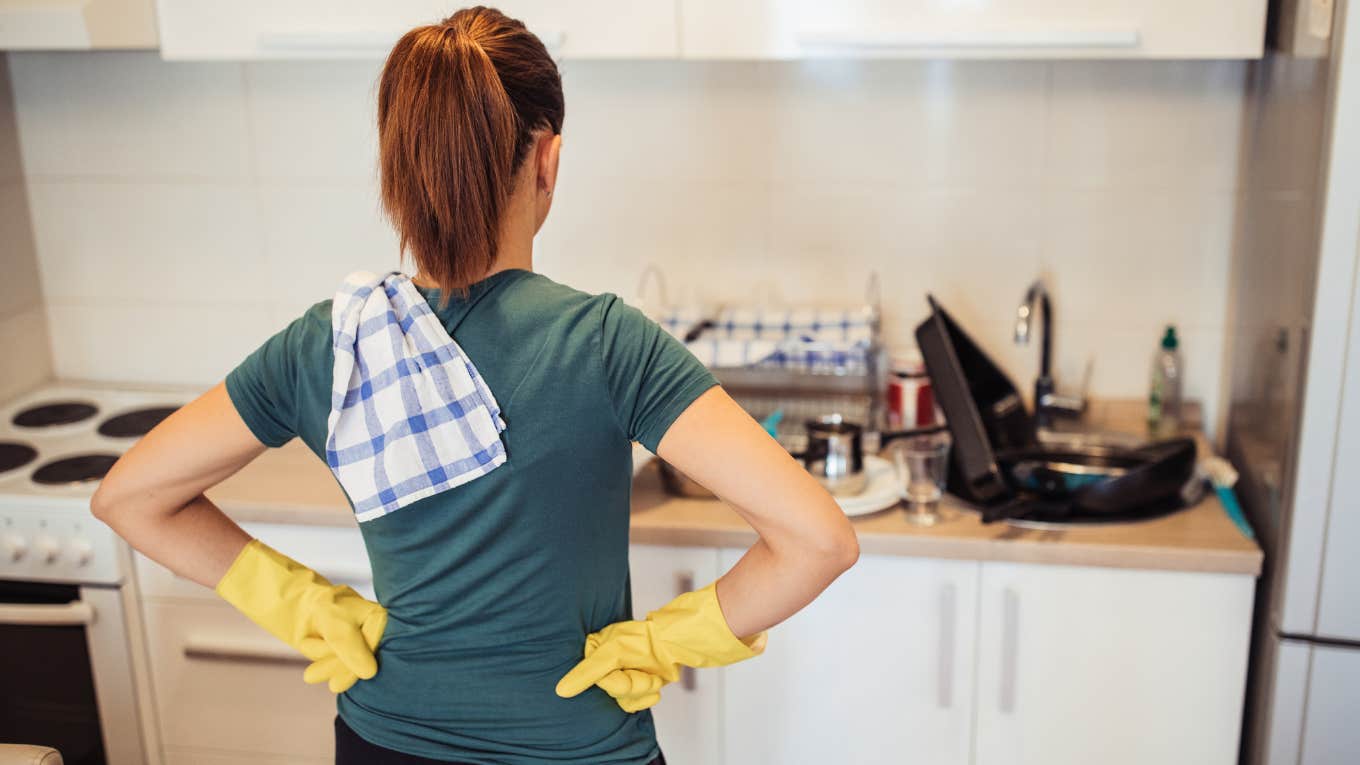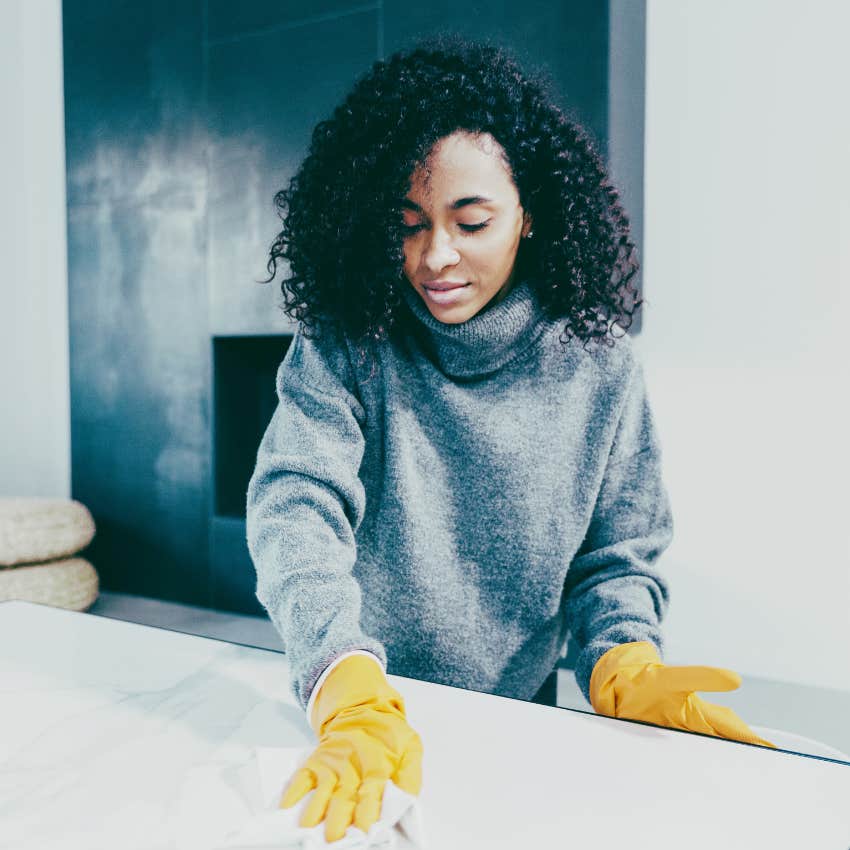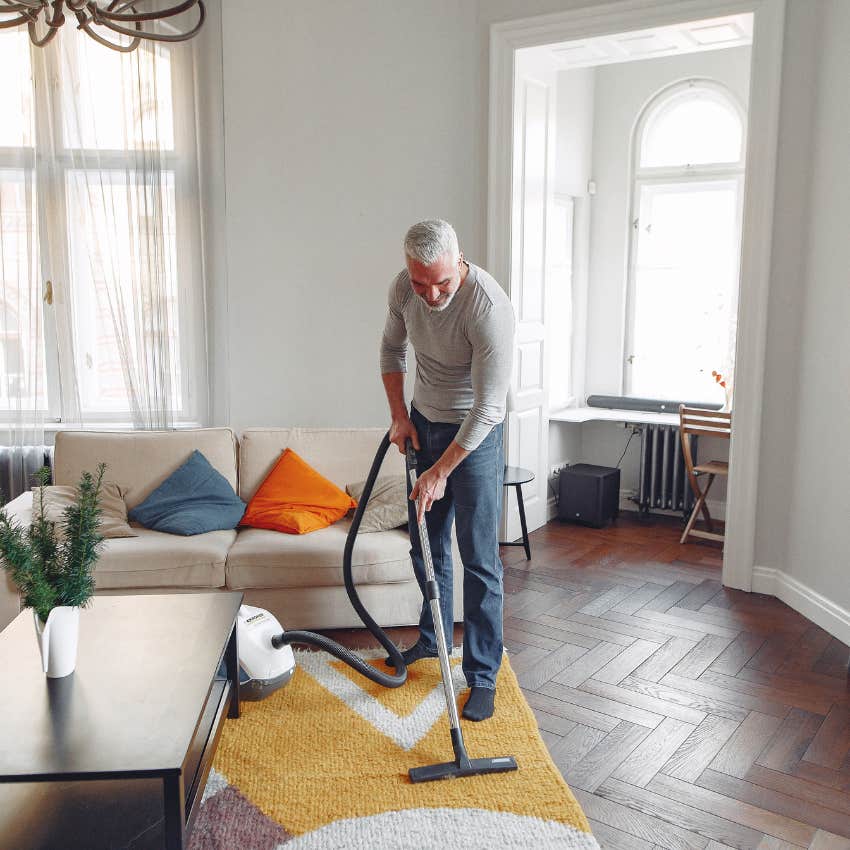Former Professional Cleaner Shares How To Clean A 2,000 Square Foot House In Just 2 Hours
Her simple method will have your house cleaned top to bottom in just an hour per 1,000 sq feet.
 Hirurg / Getty Images Signature / Canva Pro
Hirurg / Getty Images Signature / Canva Pro If you're anything like me, cleaning the house takes you so long that you kind of just…. don't do it at all, and then, spend three entire days deep cleaning every month or so when you finally cannot stand your own filth anymore. (No? Just me?)
But what if cleaning the house is actually kind of an easy job, and we're all just making it hard? One woman has a method that solves this problem with just a few simple tweaks.
A former professional cleaner shared how to clean your whole house in just 2 hours.
Feeling overwhelmed by cleaning the house is an incredibly common situation, especially for those with any kind of mental health struggles or neurodivergence. It's all part of the executive dysfunction aspects of these conditions that make things like chores often feel impossibly confusing
Cindell Kimbrough, a home inspector and TikToker, is one of these people. She has ADHD, so cleaning the house is a challenge to her brain — one that also makes her condition even harder to manage.
As she put it, "The house is a mess, so my brain is a mess," which will feel instantly familiar to anyone who struggles with these sorts of things (don't ask me how I know).
But after spending years as a professional house cleaner earlier in her career, she has cracked the code on how to get the job done in a way that doesn't feel overwhelming and is also "really fast."
"I could do, like, 2,000 or 2,500 square foot houses in, like, two hours," she said — and she means cleaning the whole house. "I'm talking dusting, floors, clutter, making the beds… Top to bottom, kitchen, bathrooms, cleaning floors, everything."
She's even used her method on enormous 5,000-square-foot houses with the same results, each house taking her about one hour per 1,000 square feet. So how does she do it? It's all about breaking the big task into several smaller tasks.
Kimbrough's number one rule is to go one room at a time.
This is probably the most important rule of Kimbrough's method. She cleans one room at a time, start to finish, before moving on to the next. If it's a big open space," like a long hallway or giant room, for instance, she breaks it into "room" size areas and cleans each one individually.
She says this is especially effective for those with neurodivergence, like her. "I have ADHD," she said. "If I make myself do this, I clean so fast. If not, I'll be cleaning all day, and it looks like I did nothing."
Kimbrough used one of her children's rooms to then show her process, using four stages of cleaning.
Step 1: Put any clutter where it goes, but don't move it to another room yet.
"Any clutter that's on the floor, put it where it goes," Kimbrough says. But what about the clutter that doesn't belong in this room? You go put it away, right? Wrong.
"Here's the kicker: If there is something in the room that does not belong in this room, you are not going to take it where it needs to go," Kimbrough said. "You are going to set it outside the door."
This is because people will often take the clutter to another room and then start cleaning in there. Then, the cycle repeats with the clutter in that room. Before you know it, you've spent tons of time cleaning, but you've actually finished nothing.
Then, you feel overwhelmed, yell, "OH [EXPLETIVE] THIS," and go lay in your hammock for the rest of the day watching TikToks with a bottle of rose, for just one random example I came up with off the top of my head for no reason whatsoever.
Step 2: Choose a corner and work clockwise around the room.
Or counterclockwise if that's your jam. Whatever! But the point is, Kimbrough said, to "pick a corner… and clean it up." Make the bed, fold the clothes, Windex the picture frames, and whatever needs doing in each corner.
 Tima Miroshnichenko / Pexels / Canva Pro
Tima Miroshnichenko / Pexels / Canva Pro
Step 3: Begin dusting, starting in the same corner and working around the room from bottom to top.
Once you've gone around the room and everything is as it should be, it's time to dust using the same exact method.
"Choose your corner, go all the way around," Kimbrough said. She recommended starting with baseboards, "and then I'm gonna come up" to any furniture, trim, doors, etc.
Yes, Kimbrough even dusts her doors, around the edges, and "all of the inlays top to bottom" with just a damp rag on both sides.
Kimbrough demonstrated in a bedroom, but obviously, if you were doing a bathroom or kitchen, you would include things like cleaning sinks and appliances as you come to them in your rotations around their respective "corners."
Step 4: Floors, and then you're done!
Once you've done all of that, what remains is vacuuming or mopping the floors, depending on whether you have carpet or hardwood. And then, you're done! "That is how you get it done quickly and efficiently," Kimbrough said with satisfaction.
 Gustavo Fring / Pexels / Canva Pro
Gustavo Fring / Pexels / Canva Pro
It turns out there's actual science behind why her method works. Psychologists say breaking large tasks into chunks is one of the best ways to conquer procrastination, for example, because it helps the brain cope with feelings of overwhelm that can get in the way.
Try this new routine this weekend; you just might get to scroll TikTok in a hammock AND have an immaculate house. A win-win.
John Sundholm is a news and entertainment writer who covers pop culture, social justice, and human interest topics.

